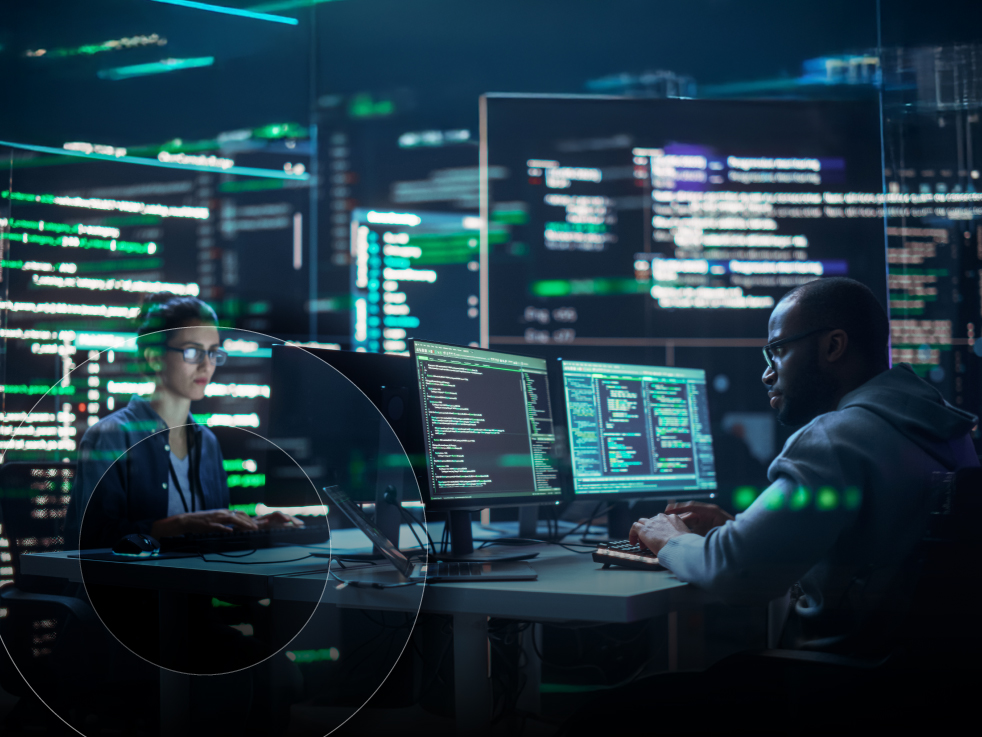What happens when smart AI security takes on hidden zero-day threats?:
Are you future-ready? Revealing insights await.

Crystal balls, pendulums, tarot cards, and of course, the nostalgic Magic 8 ball. Most of us remember the mystical allure well. The chance of unveiling the future is an enticing notion. Perhaps you want to prepare for the unexpected or get insights you wouldn’t have otherwise.
But what if you could begin to see what’s hidden or even predict the unpredictable?
When it comes to technology, you can. The emergence of artificial intelligence (AI) has opened a door into the once impossible. Unfortunately, it’s a door attackers can access too.
87% of organizations experienced AI-driven cyberattacks in the past year, including deepfakes, adaptive malware, and automated phishing, according to the SoSafe 2025 Cybercrime Trends report. “Notably, 91% of all security experts anticipate a significant surge in AI-driven threats over the next three years,” found the survey.
How does this impact the cyber threat landscape and the risk of zero-day threats? As cyber defenders, how can you solve what’s next?
How AI is transforming the threat landscape
AI acts as a double-edged sword in cybersecurity. Cybercriminals use AI to automate and scale their operations, making attacks faster and more sophisticated. For instance, ransomware groups have used tools like Anthropic and OpenAI’s ChatGPT to generate exploits and automate post-exploitation activities. The emergence of AI-driven ransomware, such as PromptLock, demonstrates how quickly attackers can adapt and innovate.
On the other side, defenders are still catching up. Security teams face the challenge of responding to threats that evolve at machine speed, often without having AI capabilities fully integrated into their own operations yet.
Zero-day threats
Zero-day threats have always posed a unique challenge for cybersecurity teams, but the rise of AI-powered attacks means unprecedented risk.
Zero-day vulnerabilities are unknown flaws in third-party technology. Unlike traditional cyber threats, which often exploit known weaknesses, zero days remain undetected until a patch is released. AI is accelerating the weaponization of zero days, making threats more dynamic and harder to defend against.
“AI is changing the threat landscape significantly, either through [threat actors] leveraging AI to weaponize new zero days or leveraging it to improve their overall capabilities, aimed at achieving the same goal they’ve always had: data extortion, extortion through ransomware, or data theft,” said Quentin Rhoads-Herrera, Stratascale Vice President – Security Services.
Recent examples include ransomware groups leveraging AI platforms to deliver malware and prompt injection attacks targeting email platforms. “The goal comes down to: How do I get defense in depth as much as possible to limit the impact to my organization if I were to be breached? Because it’s really just a matter of when, not really if it’ll happen,” said Quentin.
Challenges for security teams
One of the main challenges with zero-day threats is the lack of visibility. Organizations may be vulnerable for months before a patch is released.
“That’s the inherent risk — no matter what technology, service, or cybersecurity you have, you’re going to be vulnerable to zero days until an official mitigation or patch is deployed,” explained Quentin. “The whole concept of zero trust really breaks because not everything can be denied trust. Everything has to be interconnected in some capacity, so zero days are always going to be majorly impactful.”
Another uphill battle for security teams: the relentless pace of cyber threats. “The speed at which these [AI-driven threats] come out is particularly challenging. Attackers are already using AI to their advantage, while security teams are still trying to secure and operationalize it,” said Sam Harris, Stratascale Sr. Director – Managed Services.
Organizations must stay ahead of constant threats, even as AI is not yet fully leveraged in their operations. Building and deploying effective AI defenses takes time and resources, which many organizations must manage carefully amid limited budgets, high costs, and IT burnout.
Utilizing AI for defense
Unlike traditional, signature-based security systems that only recognize known threats, AI can detect new and evolving cyberattacks, including hidden zero-day exploits. Molding the weapon into the tool can bolster your defenses, greatly reducing the time from threat detection and response to mitigation.
AI is increasingly being integrated in security operations centers (SOCs), vulnerability management, and risk prioritization. Micro-patching — deploying temporary fixes until a full patch is available — is becoming more common.
Governance, risk, and compliance (GRC) frameworks are critical for effectively managing and monitoring risks, as well as defining what is permissible within an organization’s environment. Segmentation and creating additional mitigation capabilities also help organizations keep pace with evolving threats.
Augmenting AI with human expertise
While AI excels at automating routine tasks, sifting through large amounts of data, and some level of threat hunting and incident handling, it falters with complex, context-dependent challenges. “Implementing AI into a defensive technology stack is great, but knowing the limitations and then augmenting those limitations with your expert humans behind it is the right approach,” said Quentin.
AI can quickly adapt and detect anomalies, but human oversight remains essential for complex scenarios and business logic issues. Our experts predict the future of cybersecurity will be a hybrid model, blending AI automation with human expertise.
“Trust but verify. That’s been our motto since cybersecurity came around, and that should still be our motto,” said Sam. “And no matter what new technology we get, we should always trust but verify.”
Recommended strategies to solve what’s next
“Even though AI is new, it’s not,” said Quentin. “This isn’t the first time that we’ve seen major transformations within organizations going into completely brand-new technology.” Just as organizations transformed from on-premises to cloud and now back to a hybrid model, the same concepts are still valid here.
AI introduces a new level of complexity, but the overall process to evaluate, secure, and defend against remains consistent. While methods may change and governance or compliance frameworks may differ, organizations will continue to evaluate risk and implement controls to limit exposure, without limiting the business.
Vulnerability management is vital to organizations, whether outsourced or handled by partners like Stratascale. It involves managing patch schedules, scanning for issues, prioritizing risks, and addressing zero-day vulnerabilities promptly — especially during events like Microsoft’s regular patch releases. Practitioners should stay alert for new threats, implement mitigations, and ensure vulnerabilities aren’t exploited.
Additionally, defensive services such as modern security operations (SecOps) should focus on detection engineering and hardening cyber controls. When new vulnerabilities or threats emerge, updating detection tools in your managed detection and response (MDR) or SOC enhances the ability to respond quickly if incidents occur.
NEXT STEPS
SHI and Stratascale offer robust solutions in vulnerability management, AI-driven security, and cyber labs. With proactive defense, layered security, and human expertise, you can anticipate what’s next. To learn more about how SHI and Stratascale can help your organization stay ahead, reach out for tailored guidance today.




